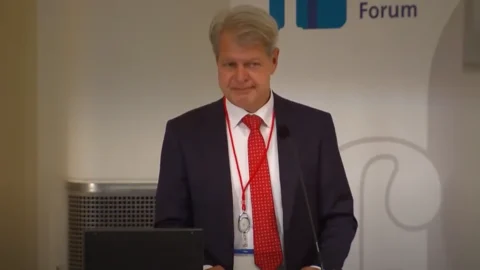Increasing VAT to fight deflation and reducing personal income tax and Irap is an excellent idea on paper, but it does have some limitations. Not least a difficult political problem to overcome. Paolo Onofri, professor of Economic Policy at the University of Bologna and vice president of Prometeia, consulted by FIRSTonline, returns to the proposal launched on this site by Innocenzo Cipolletta (read interview of 21 September) and then taken up by Filippo Cavazzuti (read intervention of 22 September)
FIRSTonline – Professor Onofri. what do you think of the European solicitation to increase VAT, to reduce the tax wedge?
Onofri – In principle, in the abstract, it's a good choice. This is what is called a reallocation of taxes. In Italy the VAT rate of 22% is already at its maximum, so it would be a question of acting on 4% and 10% and with the proceeds affecting social contributions, the taxation of labor costs. It is a maneuver already proposed by Delors in the early 90s, also called fiscal depreciation, because, in theory, reducing social security contributions affects the cost of goods at the origin, favoring a reduction in prices and an increase in exports. The VAT on imported goods would instead contribute to reducing imports, improving the trade balance. It is an effect similar to the one obtained by depreciating the currency.
FIRSTonline – Could also contribute to higher inflation…
Onofri – This is not entirely true, because it is an accounting effect, valid for a maximum of one year. The last VAT increase is quite recent, I'd say it dates back to October 2013, but we haven't seen any growth in inflation. For a positive mechanism to be set in motion, a stimulus to demand in general is needed. What we are talking about is a classic manoeuvre, from textbooks, which is why the European Commission suggests it to all countries. If everyone adopted it, however, the positive effects on the import-export relationship would only be seen in non-EMU countries, i.e. outside the single currency. Furthermore, the increase in internal prices would occur only if demand remained high, while a simple reduction in the cost of labor would not act in this sense.
FIRSTonline – Could the resources obtained from an increase in VAT, from 4% to 10% and from 10% to 22%, then be used to reduce the Irpef of the less well-off and Irap?
Onofri – Yes, this could be interesting too. However, the goods with the lowest tax rates are those where the share of consumption of low incomes weighs the most. The reduction in personal income tax, intended for them, should compensate for the reduction in purchasing power, but from a social point of view, what would leap to the eye is the fact that it would be above all the less wealthy who would pay and I don't think the Government wants to open this front too.
FIRSTonline – Are there alternatives to achieve the same result?
Onofri – To reduce the tax burden, the various cost savings should be used from time to time. As far as the reduction of labor costs is concerned, a de facto balance sheet already exists, therefore one cannot draw on this item to find the resources and put in another one. Finally, if we were farsighted, we should also act on the productivity side, because what really matters is the relationship between labor costs and productivity, ie the labor cost per unit of product.





